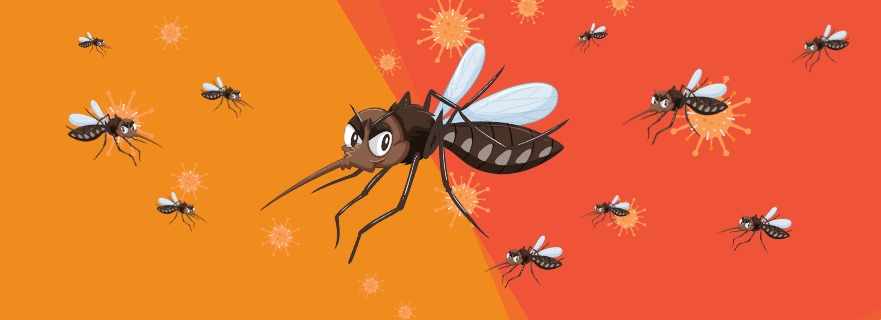
It takes a village to ensure the Loddon Mallee is protected from mosquito-borne diseases.
There are a lot of players who take on different roles in the preparation, surveillance, prevention and handling of potential outbreaks – one of those is the Loddon Mallee Public Health Unit (LMPHU).
Joining forces with the Victorian Department of Health and local councils, the unit plays a vital role in limiting the exposure to mosquito-borne diseases.
As the weather warms, mosquito numbers tend to rise. Not all mosquitoes carry diseases but some do.
Most common in Loddon Mallee are Ross River virus and Barham Forest virus.
These viruses can cause joint inflammation and pain, fatigue, and a rash and symptoms can continue or re-emerge over long periods of time, impacting quality of life.
In recent years there have been human cases of Japanese encephalitis virus (JE) and Murray Valley encephalitis (MVE) in the region.
Infections from JE and MVE are rare but have the potential to cause severe disease.
It’s the LMPHU’s job to ensure residents know as much as they can about these diseases through public health messaging, and know how to protect themselves from mosquito bites.
Where cases are reported, the LMPHU uses surveillance data to identify geographical areas where targeted public health actions and control measures can be implemented.
“Everyone has a role in this,” LMPHU Health Protection team leader Tracey Watson said.
“It’s not just organisations, land owners have a responsibility to maintain their properties to reduce or eliminate mosquito breeding sites.”
Its important residents consider protecting themselves and their properties by:
Local councils have the important job of monitoring mosquito numbers and the diseases they may be carrying, through the state-wide mosquito surveillance system.
Each week of the high risk season, mosquitoes are trapped and sampled, which allows them to be identified, counted and screened for potential viruses.
If the virus is detected, it gives an early indication of the health risk to communities. Intervention measures include continued surveillance, physical and chemical control, community education and vaccination where there is a vaccine.
Human cases of mosquito-borne illness are reported via the testing laboratories or by a GP.
Depending on the potential disease severity there are different reporting requirements, and responses by the LMPHU.
“For JEV and MVE, Public Health Officers will contact the case or next of kin to try and work out where the case was when they were bitten by the infected mosquito.
"The common diseases in the LMPHU region spread from mosquitoes to people, not person to person.”
If this sounds familiar, this is a similar process undertaken by COVID contact tracers during the pandemic.
In Victoria, Public Health Units were stood up in response to the pandemic but now the Department of Health have transitioned 83 notifiable diseases to these units for management, which includes mosquito borne diseases.
The LMPHU hopes by making people aware of how to prevent mosquito-borne diseases the number of notifications will reduce.
“It’s important to educate people on how to prevent contracting mosquito-borne diseases,” Tracey said.
“Take the steps to reduce breeding sites, put physical barriers (such as screens and nets) in place, use repellent, and get vaccinated against JEV if you are eligible.”
“Also, if you are going on holiday check for local mosquito borne diseases and seek advice on how you can protection yourself.”
If you’d like to find out more about protecting yourself this mosquito season, click here.
Keep up-to-date with council trapping numbers during the season here.
More information on the work the LMPHU does in the health protection space can be found here.